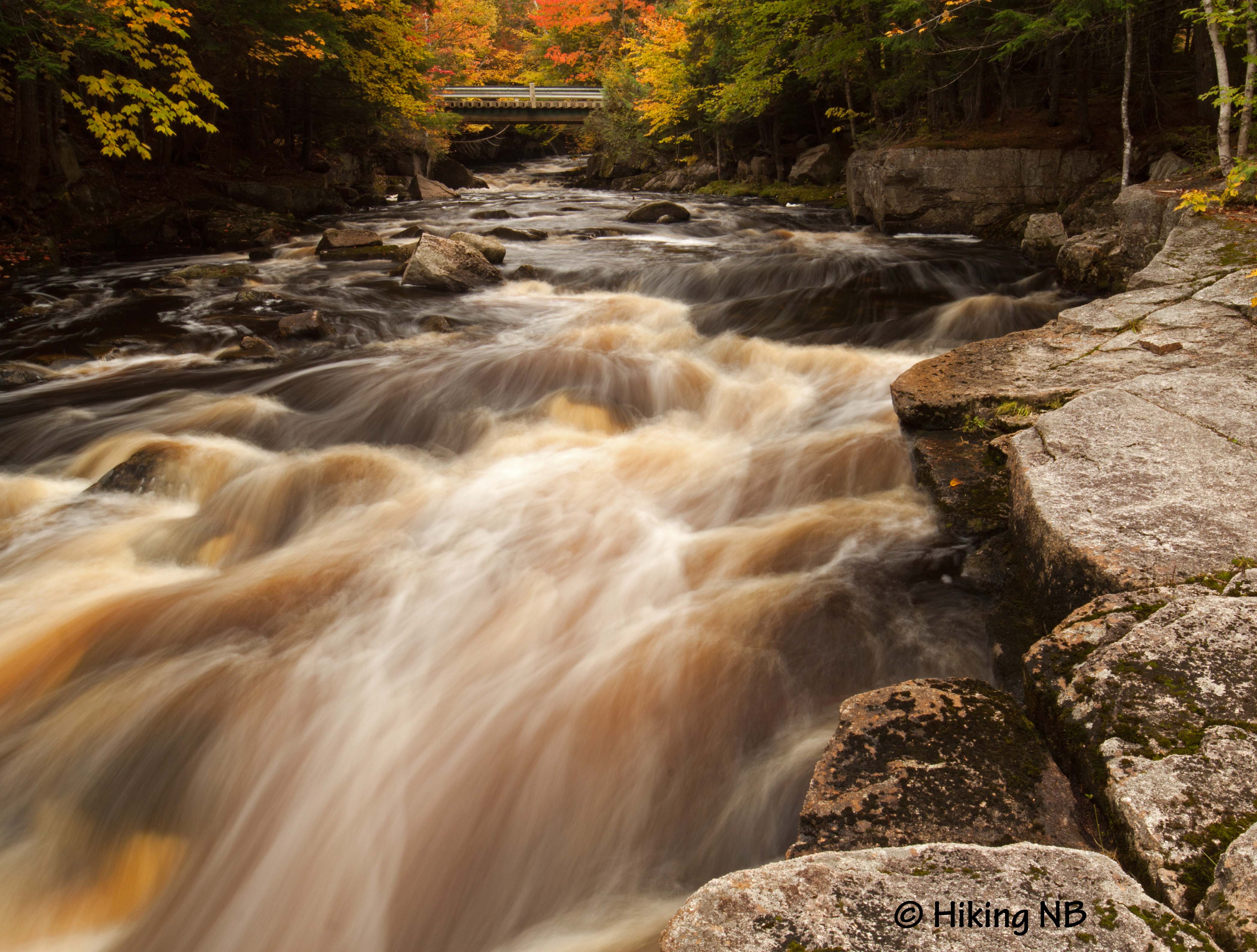Streamside Trail
Big Pokiok Nature ParkQuick Facts
| Difficulty | easy |
| Trail Type | loop |
| Distance | 1.1 km |
| Estimated Time | 30 minutes |
| Surface Type | forested |
| Elevation Change | 59 metres |
| Features | stream |
| Trail Markers | purple squares |
| Scenery Rating | beautiful |
| Maintenance Rating | variable |
| Cell Reception | strong |
| Dog Friendly | yes |
| Fees | none |
From the Sign
The following are descriptions from a brochure that used to exist for the park.
- Forest Thinning - On both sides of the trail you see a forest that was thinned in 1987. Trees were removed so that there are now 1800 stems per hectare compared to 18,000 per hectare previously. This promotes a more vigerous growth of the remaining trees while retaining the same general mix of sugar maples, beech, white birch, trembling aspen, red spruce and balsam fir.
- Spruce and Fir - Here we have two trees which, at first glance, look very similar but in fact are quite different. The tree on the right is a balsam fir, New Brunswick's provincial tree and the traditional Christmas tree. It is identified by its soft, flat needles and its grey, smooth bark. The tree on the left is a red spruce, highly valued for pulp and lumber. It has shorter needles, which are sharp and yellow-green, and a reddish-brown, scaly bark. Both trees are about 50 years old.
- Hemlock On The Rocks - A tree growing atop a rock, as is this one, is not uncommon in the Pokiok area where there are a great many big rocks. Moss of other organic material on the rock would have provided the original seedbed in which this tree germinated and grew. That was more than 120 years ago, and the tree is still doing well.
- Hollow Tree - Here is a tree more valuable to wildlife than to the forest industry. Hollow or rotted at least part-way up the trunk, with an entrance hole at the bottom, the tree can be a den for small mammals like raccoons, porcupines and pine marten.
- Pileated Woodpecker's Handiwork - The large, rectangular holes in these cedar trees are the work of a pileated woodpecker, which, at 18 inches in length, is the largest woodpecker occurring in New Brunswick. It creates those holes while digging for delectable carpenter ants deep in the tree trunks.
- Eastern White Pine - This lovely tree is an eastern white pine more than 100 years old, 25 metres tall and 75 centimetres in diameter. Generally the tallest tree in a Maritime forest, the white pine was historically important as a source of lumber for ship-building. Many of today's survivors are malformed, the result of blister rust and white pine weevil, but this one, we are happy to note, is not among them.
- Pokiok Narrows Bridge - The latest of a dozen bridges built at this spot over the past 65 years, this one affords a good view of the Pokiok Narrows. Ice flows took out some of its predecessors; others simply wore out and had to be replaced because of increased woods traffic.
- Tree Root System - Strong winds blew over this balsam fir tree, exposing nearly its entire root system. Typical of the balsam fir, this tree had a wide, shallow system made up of roots of many different sizes. Only the smallest, hair-like rootlets took up water and nutrients from the soil; the larger roots supported the tree and kept it upright - until that strong wind blew!
- Natural Regeneration - Compare this area, which is regrowing naturally, with the first stop on this trail, where you saw an area that has been thinned. Here the trees are much closer together and growing less vigorously. Many of the tallest trees are pin cherry, a non-commercial species that shades and competes with the more desireable spruce, fir, birch and beech. Trees in this stand will take much longer to reach merchantable size.
Map
Directions
For directions to the park go to the Big Pokiok Nature Park page.
Other Trails in the Park
Trail Last Hiked: October 9, 2015.
Page Last Updated: November 11, 2015.


